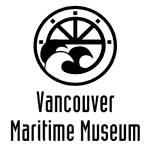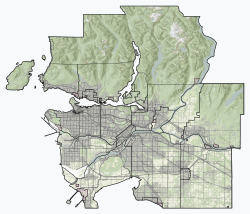
Captain George Vancouver was a British Royal Navy officer best known for his 1791–1795 expedition, which explored and charted North America's northwestern Pacific Coast regions, including the coasts of what are now the Canadian province of British Columbia as well as the US states of Alaska, Washington, Oregon, and California. The expedition also explored the Hawaiian Islands and the southwest coast of Australia.

The Northwest Passage (NWP) is the sea lane between the Atlantic and Pacific oceans through the Arctic Ocean, along the northern coast of North America via waterways through the Canadian Arctic Archipelago. The eastern route along the Arctic coasts of Norway and Siberia is accordingly called the Northeast Passage (NEP). The various islands of the archipelago are separated from one another and from Mainland Canada by a series of Arctic waterways collectively known as the Northwest Passages, Northwestern Passages or the Canadian Internal Waters.

A maritime museum is a museum specializing in the display of objects relating to ships and travel on large bodies of water. A subcategory of maritime museums are naval museums, which focus on navies and the military use of the sea.

RCMPVSt. Roch is a Royal Canadian Mounted Police schooner, the first ship to completely circumnavigate North America, and the second vessel to transit the Northwest Passage. She was the first ship to complete the Northwest Passage in the west to east direction, using the same route that Amundsen on the sailing vessel Gjøa had traversed east to west, 38 years earlier.

Henry Asbjørn Larsen was a Norwegian-Canadian Arctic explorer. Larsen was born on a small island, Herføl, south of Fredrikstad in Norway. Like his hero, Roald Amundsen, he became a seaman. Larsen immigrated to Canada, and became a British subject in 1927. In 1928, he joined the Royal Canadian Mounted Police (RCMP).

HMS Terror was a specialised warship and a newly developed bomb vessel constructed for the Royal Navy in 1813. She participated in several battles of the War of 1812, including the Battle of Baltimore with the bombardment of Fort McHenry. She was converted into a polar exploration ship two decades later, and participated in George Back's Arctic expedition of 1836–1837, the successful Ross expedition to the Antarctic of 1839 to 1843, and Sir John Franklin's ill-fated attempt to force the Northwest Passage in 1845, during which she was lost with all hands along with HMS Erebus.

HMS Discovery was a Royal Navy ship launched in 1789 and best known as the lead ship in George Vancouver's exploration of the west coast of North America in his famous 1791-1795 expedition. She was converted to a bomb vessel in 1798 and participated in the Battle of Copenhagen. Thereafter she served as a hospital ship and later as a convict ship until 1831. She was broken up in 1834.

CP Ships was a large Canadian shipping company established in the 19th century. From the late 1880s until after World War II, the company was Canada's largest operator of Atlantic and Pacific steamships. Many immigrants travelled on CP ships from Europe to Canada. In the early 20th century the sinking of the Canadian Pacific steamship RMS Empress of Ireland just before World War I became largest maritime disaster in Canadian history. The company provided Canadian Merchant Navy vessels in World Wars I and II. Twelve vessels were lost due to enemy action in World War II, including the RMS Empress of Britain, which was the largest ship ever sunk by a German U-boat.

James Preston Delgado is a maritime archaeologist, historian, maritime preservation expert, author, television host, and explorer.
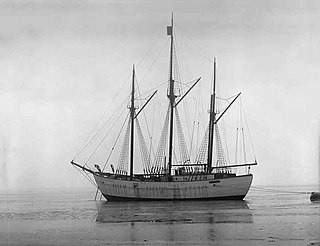
Maud, named for Queen Maud of Norway, was a ship built for Roald Amundsen for his second expedition to the Arctic. Designed for his intended voyage through the Northeast Passage, the vessel was built in Asker, a suburb of the capital, Oslo.

RMS Empress of Japan, also known as the "Queen of the Pacific", was an ocean liner built in 1890–1891 by Naval Construction & Armaments Co, Barrow-in-Furness, England for Canadian Pacific Steamships (CP). This ship – the first of two CP vessels to be named Empress of Japan – regularly traversed the trans-Pacific route between the west coast of Canada and the Far East until 1922. During the First World War she served as armed merchant cruiser, becoming HMS Empress of Japan for the period that she was a commissioned ship of the Royal Navy.
The Maritime Museum of British Columbia (MMBC) is a museum in Victoria, British Columbia, Canada, that engages people with the maritime culture and history of the Pacific Northwest through rotating exhibits, educational and community-based programs, research services, and more.
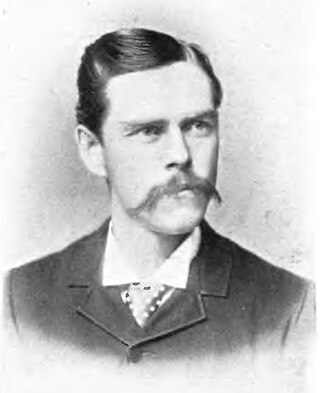
James William Troup was an American steamship captain, Canadian Pacific Railway administrator and shipping pioneer.
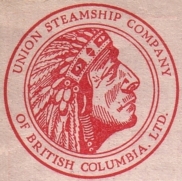
The Union Steamship Company of British Columbia was a pioneer firm on coastal British Columbia. It was founded in November 1889 by John Darling, a director of the Union Steamship Company of New Zealand, and nine local businessmen. The company began by offering local service on Burrard Inlet near Vancouver and later expanded to servicing the entire British Columbia coast.

HMS Alert was a 17-gun wooden screw sloop of the Cruizer class of the Royal Navy, launched in 1856 and broken up in 1894. She was the eleventh ship of the Royal Navy to bear the name, and was noted for her Arctic exploration work; in 1876 she reached a record latitude of 82° North. Alert briefly served with the US Navy, and ended her career with the Canadian Marine Service as a lighthouse tender and buoy ship.
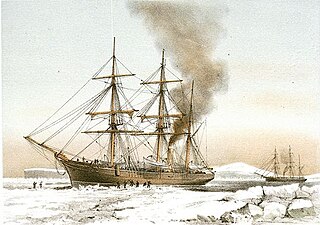
HMS Discovery was a wood-hulled screw expedition ship, and later storeship, formerly the sealing ship Bloodhound built in 1873 in Dundee. She was purchased in 1874 for the British Arctic Expedition of 1875–1876 and later served as a store ship. Discovery was sold in 1902, reverting to the name Bloodhound and her previous sealing trade. The ship was wrecked in Newfoundland in 1917.

Cowichan was a steamship which was operated in British Columbia under the ownership of the Union Steamship Company. Cowichan sank in 1925 following a collision with another ship.

Point Atkinson Lighthouse is a lighthouse erected on Point Atkinson, a headland in southwestern British Columbia named by Captain George Vancouver in 1792, when he was exploring the Pacific Northwest in the ship Discovery. The first wooden lighthouse went into service in 1875 and was replaced by a reinforced concrete structure in 1914.
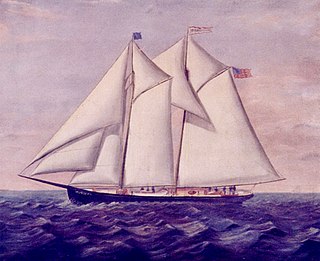
The Thomas F. Bayard was a 19th-century Delaware River pilot schooner built by C. & R. Poillon shipyard in 1880. She spent sixteen years as a pilot boat before being sold during the Yukon Gold Rush in 1897. She was sold again in 1906 for Seal hunting, then purchased by the Department of Marine & Fisheries where she guided freighters into New Westminster, British Columbia for 43 years. She was then acquired by the Vancouver Maritime Museum in 1978. When she sank at her mooring in 2002, the International Yacht Restoration School, Mystic Seaport and the Vancouver Maritime Museum, removed the vessel in pieces for the archeological teams to study and document the remains of her hull. The Thomas F. Bayard Collection, at the Vancouver Maritime Museum, contains the documents, history and preservation efforts.
